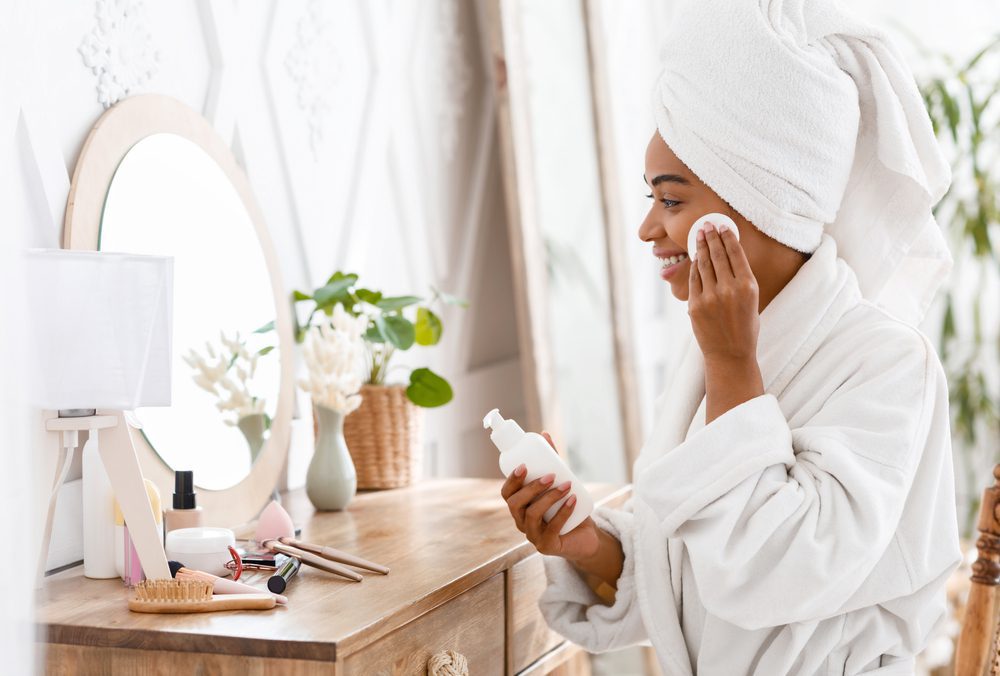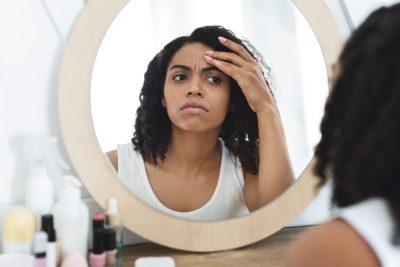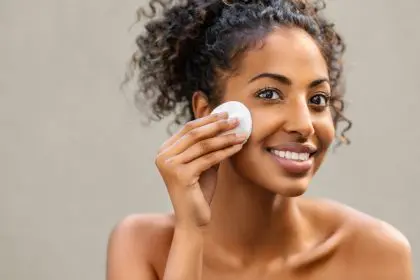Morning routines establish the foundation for your skin’s daily performance and long-term appearance. These initial hours bring particular vulnerability to aging influences, as overnight repair processes conclude and environmental challenges begin. What seems like a minor morning habit can significantly impact how your skin functions throughout the day and ultimately determines how youthful you appear.
During sleep, your skin undergoes intensive regeneration, with cellular renewal rates peaking and repair mechanisms working at maximum efficiency. The transition from this nighttime restoration to daytime protection creates a critical window where proper care provides lasting benefits—or where mistakes can accelerate visible aging effects. This morning vulnerability explains why certain habits disproportionately impact appearance compared to identical behaviors at other times.
The cumulative effect of repeated morning mistakes compounds over time. What begins as subtle changes in skin tone or texture gradually develops into more noticeable aging signs, creating a significantly older appearance than your chronological age would suggest. Understanding this process allows for strategic morning adjustments that can effectively turn back the clock on premature aging.
The morning mistake that accelerates skin aging
The most damaging morning beauty error involves skipping sun protection or applying it incorrectly. This seemingly minor oversight allows ultraviolet radiation to trigger a cascade of aging processes within the skin, from collagen breakdown to DNA damage. Research consistently demonstrates that unprotected morning sun exposure accelerates skin aging more dramatically than almost any other lifestyle factor.
Many individuals mistakenly believe that sun protection only matters during beach vacations or extended outdoor activities. In reality, daily incidental exposure accumulates substantial damage, particularly during morning commutes, walking pets, or even sitting near windows. These brief exposures may not cause obvious sunburn but generate considerable aging effects through chronic, low-level damage.
The morning timing makes this mistake particularly detrimental. UV rays increase in intensity throughout the morning hours, peaking at midday. Without protection applied early, your skin experiences escalating radiation exposure precisely when outdoor activities most commonly occur. Additionally, morning skin often contains higher residual levels of certain skincare ingredients applied the previous evening, some of which increase photosensitivity and amplify UV damage.
Window glass compounds this problem by creating a false sense of protection. While standard windows block UVB rays (responsible for sunburn), they allow UVA rays (primary contributors to aging) to penetrate. Morning routines conducted near windows—including driving, breakfast, or getting ready—expose unprotected skin to these aging rays without the warning sign of sunburn development.
The visibility impact appears particularly in comparative studies of identical twins or long-term transportation workers with asymmetric sun exposure. These cases reveal dramatic differences in apparent age based primarily on cumulative UV exposure differences, often adding 5-9 years of visible aging to the more sun-exposed individual despite identical chronological age and genetic makeup.
How this mistake transforms your appearance
The aging effects of inadequate morning sun protection manifest through several visible changes that collectively create an older appearance regardless of actual age. Understanding these specific effects explains why this particular mistake proves so aging.
Collagen degradation accelerates dramatically with UV exposure, breaking down the supportive protein fibers that maintain skin firmness and elasticity. This structural damage manifests as increased sagging, particularly along the jawline and cheeks. Morning sun exposure without protection triggers specialized enzymes that break down existing collagen while simultaneously impairing the skin’s ability to produce new collagen fibers.
Hyperpigmentation develops as sun exposure triggers irregular melanin production, creating age spots, uneven skin tone, and patches of discoloration. These pigmentation changes particularly impact the forehead, cheeks, and chest—areas most exposed during typical morning activities. Once established, these pigmentary changes prove difficult to reverse and immediately suggest advanced age regardless of other facial features.
Fine line multiplication occurs as repeated sun exposure damages surface skin layers and depletes natural hydration factors. These superficial wrinkles appear first around the eyes and upper cheeks, areas most affected by squinting in bright morning light. While deeper wrinkles develop over decades, these fine surface lines can appear rapidly with consistent morning sun exposure.
Skin barrier disruption represents a more subtle but significant aging effect. UV radiation damages the skin’s protective outer layer, increasing moisture loss and environmental sensitivity. This compromised barrier function creates dullness, rough texture, and increased reactivity that collectively suggest older skin regardless of other visible markers.
Blood vessel changes develop through UV-induced inflammation that gradually damages and dilates small facial blood vessels. These changes create visible redness, particularly across the cheeks and nose, while contributing to the development of spider veins and broken capillaries. These vascular changes suggest advanced age by mimicking the cumulative damage seen in outdoor workers and elderly populations.
The morning protection strategy that reverses aging signs
Implementing effective morning sun protection creates both immediate appearance benefits and long-term aging prevention. The comprehensive approach involves several key elements that work together for maximum rejuvenating effect.
Early application timing proves crucial for effective protection. Applying sunscreen should occur early in your morning routine, allowing protective ingredients to fully bind with the skin before any potential exposure. This early application ensures protection during morning commutes and prevents the brief “unprotected windows” that many experience while getting ready or traveling to work.
Formulation selection significantly impacts both protection quality and cosmetic elegance. Modern broad-spectrum sunscreens with SPF 30-50 provide comprehensive protection without the heavy, greasy feel that historically discouraged regular use. Choosing formulations specifically designed for facial application ensures comfortable wear that integrates seamlessly with makeup and other skincare products.
Comprehensive coverage areas extend beyond just the face. The neck, chest, hands, and any other exposed skin require equal protection, as these areas often show advanced aging signs that can misalign with a well-protected face. Paying special attention to areas like the sides of the neck and back of hands—frequently missed in hurried morning routines—prevents the disconnected appearance of varying aging levels across different body areas.
Reapplication strategies maintain protection throughout the day. While morning application creates the foundation, protection diminishes through product breakdown, physical removal, and sweating. Developing convenient reapplication methods—such as powder sunscreens, setting sprays with SPF, or cushion compacts—allows midday renewal of protection without disrupting makeup or requiring extensive reapplication.
Supplementary protection beyond sunscreen provides additional defense against morning aging factors. Wide-brimmed hats, UV-filtering sunglasses, and protective clothing create physical barriers that complement chemical protection. For those with extended morning commutes, considering UV window films for cars or workspaces adds another protective dimension against incidental exposure.
Additional morning habits that compound aging effects
While sun protection represents the most critical morning anti-aging strategy, several other common morning mistakes further accelerate visible aging when combined with UV exposure. Addressing these complementary factors maximizes your appearance benefits.
Harsh cleansing strips natural oils and disrupts the skin barrier, leaving skin vulnerable to environmental damage throughout the day. Morning cleansing should use gentle, non-foaming cleansers that preserve protective lipids while removing overnight accumulation of sweat and skincare product residue. This measured approach maintains barrier integrity while preparing skin for protective ingredients.
Hydration neglect during morning hours creates progressive moisture depletion throughout the day. Dehydrated skin emphasizes fine lines, creates dull texture, and diminishes the effectiveness of sunscreen formulations. Including hydrating serums containing humectants like hyaluronic acid or glycerin before sunscreen application ensures proper moisture levels that maintain plump, youthful-appearing skin.
Antioxidant omission leaves skin vulnerable to environmental damage beyond UV radiation. Morning application of antioxidant ingredients like vitamin C, ferulic acid, or niacinamide provides additional protection against free radical damage from pollution, visible light, and infrared radiation. These ingredients work synergistically with sunscreen to provide comprehensive environmental protection.
Sleep position effects from the previous night often manifest as morning facial puffiness and sleep creases that temporarily age appearance. Addressing these carryover effects through gentle facial massage, cold compresses, or facial roller tools helps reset facial contours and reduce temporary aging signs before applying protective skincare.
Stress management during morning hours impacts both immediate appearance and long-term aging processes. High-stress mornings trigger cortisol release that accelerates skin aging through inflammation, barrier disruption, and collagen breakdown. Building brief mindfulness practices into morning routines helps mitigate these stress-related aging effects.
Transforming your routine: Implementation strategies
Creating sustainable morning protection habits requires practical strategies that fit into real-world schedules and lifestyle patterns. Several approaches help establish these protective routines without adding significant time or complexity to busy mornings.
Unified product selection simplifies application while ensuring comprehensive protection. Products that combine multiple benefits—such as moisturizers with built-in broad-spectrum protection, tinted sunscreens that provide both coverage and protection, or primer-sunscreen hybrids—reduce steps while maintaining complete protection. This consolidation particularly helps individuals with minimal morning prep time.
Strategic placement of products encourages consistent use by keeping protective items visible and accessible. Positioning sunscreen prominently among morning essentials, rather than stored with occasional products, serves as a visual reminder while making application a natural part of established routines. This environmental cueing proves particularly effective for establishing new habits.
Sequence optimization ensures product effectiveness while minimizing application time. The ideal morning sequence applies products from thinnest to thickest consistency, with water-based products before oil-based formulations. This approach maximizes absorption while preventing the pilling or separation that discourages regular sunscreen application.
Paired habit formation links sun protection with established morning habits, increasing adherence through behavioral association. Connecting sunscreen application with immovable daily activities—such as brushing teeth, making coffee, or checking phones—embeds protection into existing routines rather than requiring entirely new habit formation.
Seasonal adjustments maintain protection levels throughout the year. While summer months might require higher SPF levels and water-resistant formulations, winter protection needs more emphasis on barrier repair and protection against reflected UV from snow or wet surfaces. These seasonal shifts maintain appropriate protection while addressing changing skin conditions.
Long-term benefits of correcting this morning mistake
The advantages of proper morning sun protection extend far beyond immediate appearance improvements, creating progressive benefits that accumulate over time.
Aging rate normalization occurs as daily protection allows the skin’s natural repair mechanisms to function effectively rather than constantly addressing UV damage. This normalized aging progression prevents the accelerated decline that creates the dramatic age overestimation associated with chronic sun exposure. Consistency with this approach typically allows individuals to maintain an appearance 5-10 years younger than similarly aged peers with unprotected sun exposure.
Skin tone evening develops gradually as protected skin recovers from previous damage. While existing pigmentation may require specific treatment for complete resolution, preventing new discoloration allows natural cell turnover to slowly improve overall tone uniformity. This progressive improvement typically becomes noticeable within 3-6 months of consistent morning protection.
Treatment effectiveness increases substantially when applied to protected skin. Ingredients targeting specific aging concerns—such as retinoids, peptides, or alpha hydroxy acids—work more efficiently and with less irritation when not competing with ongoing UV damage. This synergistic effect maximizes results from both preventive and corrective skincare approaches.
Skin sensitivity reduction occurs as the protective barrier strengthens through consistent protection. Many individuals mistakenly attribute product reactions to specific ingredients when the actual cause involves compromised barrier function from unprotected sun exposure. As protection restores normal barrier function, overall tolerance for active ingredients typically improves.
Self-perception improvement develops as visible aging signs gradually diminish. Research consistently demonstrates that perception of facial appearance significantly impacts confidence, social interactions, and even professional opportunities. The progressive improvement from consistent protection creates psychological benefits extending well beyond cosmetic concerns.
By transforming this seemingly simple morning mistake into a consistent protective routine, you effectively reset your skin’s aging trajectory. This single change often creates more significant rejuvenation than expensive treatments or procedures by addressing the fundamental factor in premature aging. The morning minutes invested in proper protection literally subtract years from your apparent age while establishing the foundation for healthy, vibrant skin at any chronological age.












